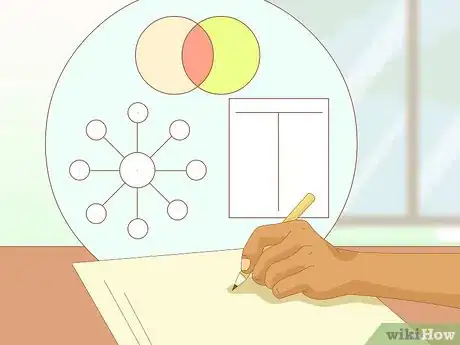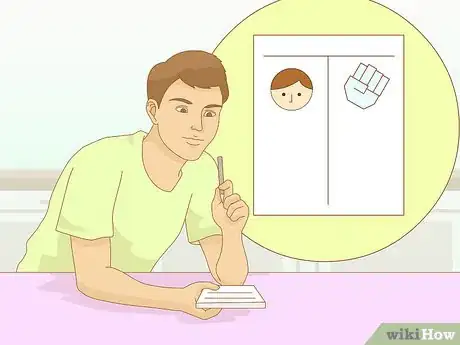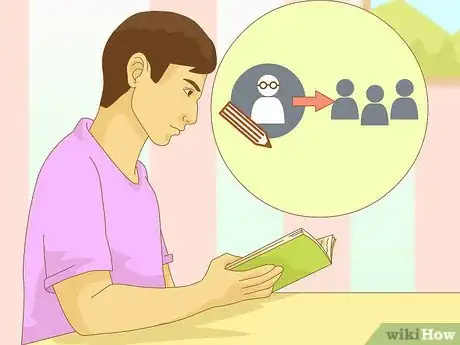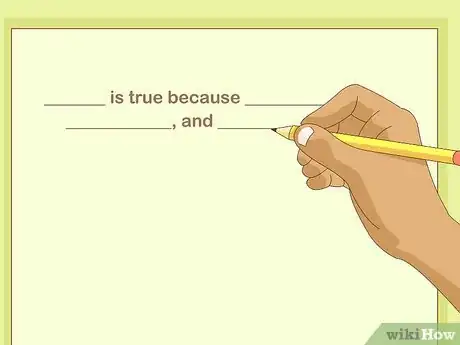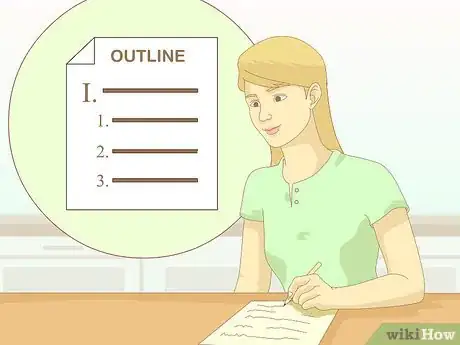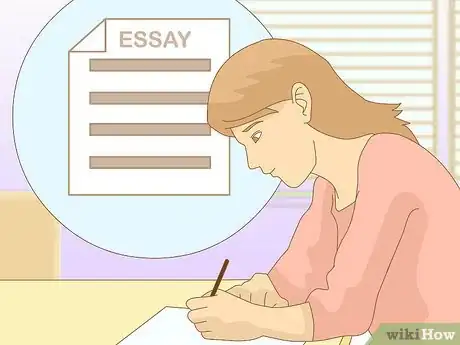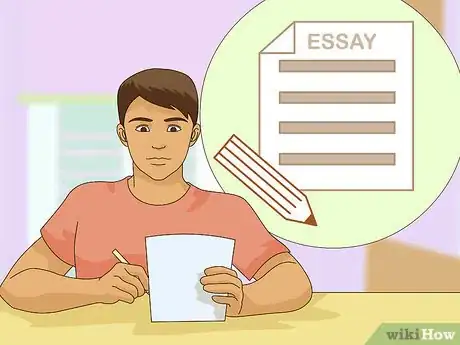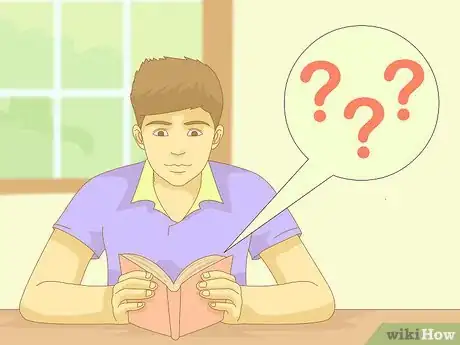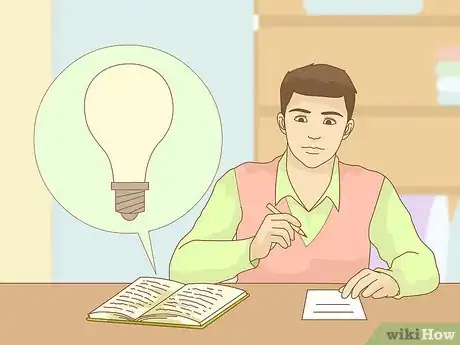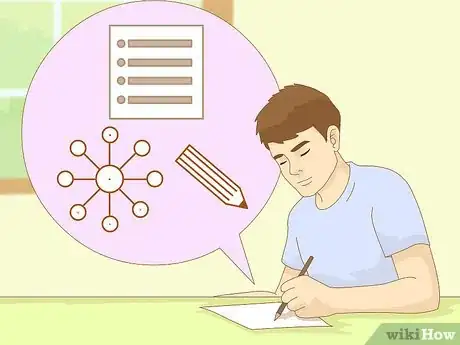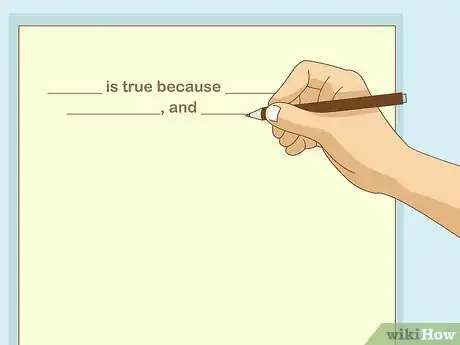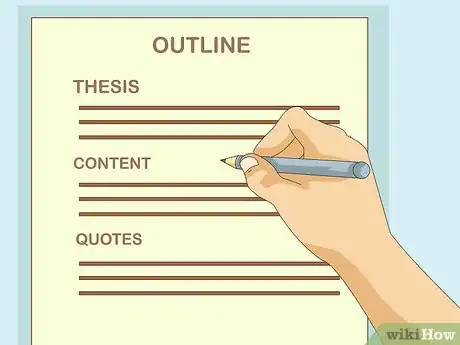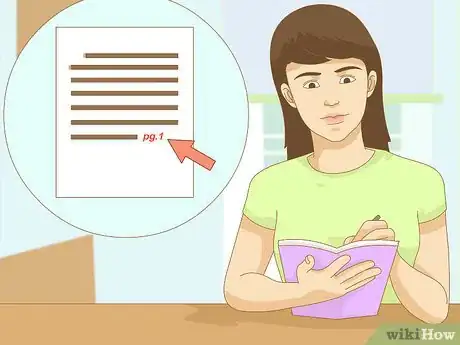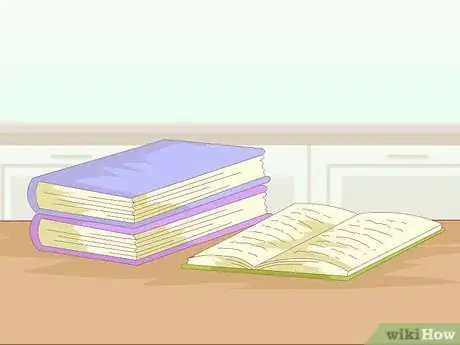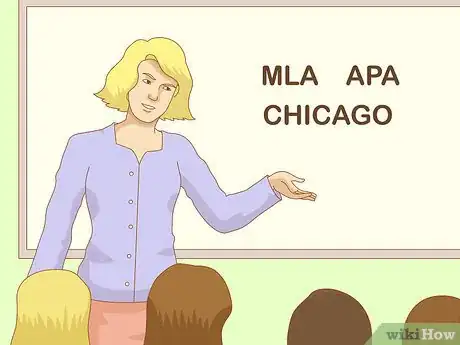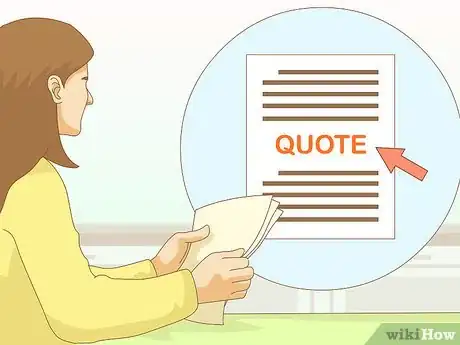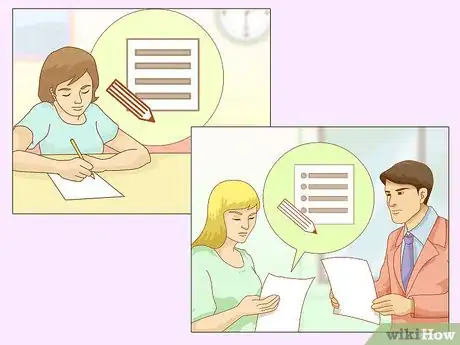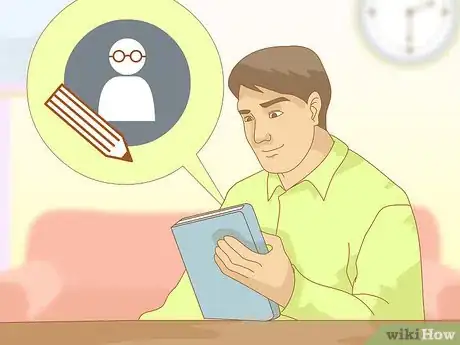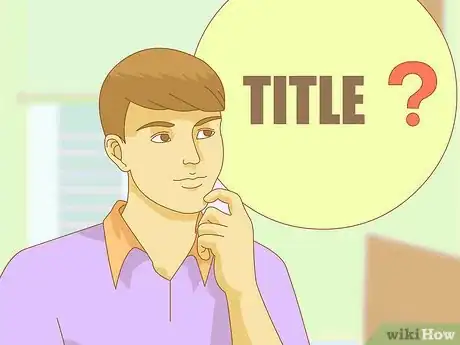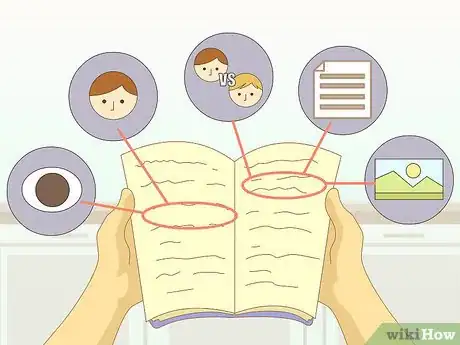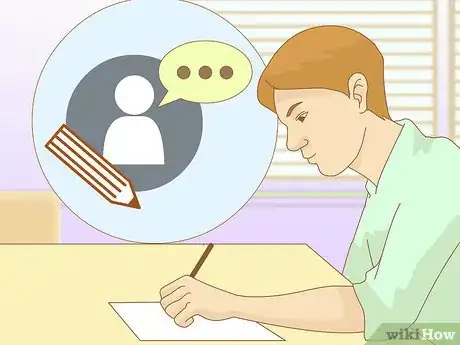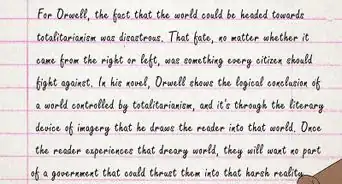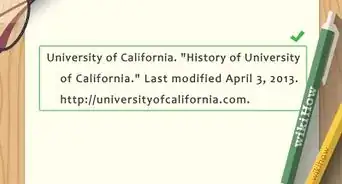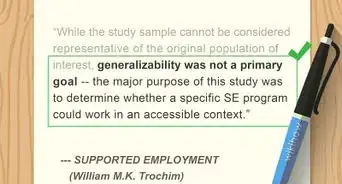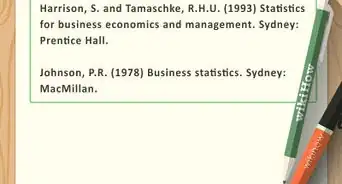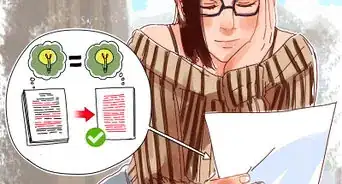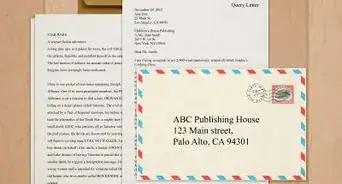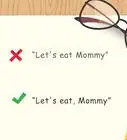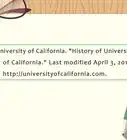This article was co-authored by Michelle Golden, PhD. Michelle Golden is an English teacher in Athens, Georgia. She received her MA in Language Arts Teacher Education in 2008 and received her PhD in English from Georgia State University in 2015.
There are 7 references cited in this article, which can be found at the bottom of the page.
wikiHow marks an article as reader-approved once it receives enough positive feedback. In this case, 88% of readers who voted found the article helpful, earning it our reader-approved status.
This article has been viewed 239,095 times.
A literature critique, sometimes called a literary analysis or a literary critical analysis, is an examination of a piece of literature. The scope of a critique of literature may be to examine a single aspect of the work, or the work in its entirety, and involves breaking the literary piece apart into its separate components and evaluating how they fit together to accomplish the piece's purpose. Literary critiques are commonly executed by students, scholars, and literary critics, but anyone can learn how to critique literature!
Steps
Conducting a Basic Critique for Beginners
-
1Read the literature carefully. You start a critique not when you sit down to write the essay, but when you sit down to read the work of literature. Ask yourself why the characters do the things they do in all works of literature, whether novels, short stories, essays, or poems.
-
2Create a graphic organizer. To help you organize the plot and characters so that you can think about the text, it is useful to make a graphic organizer. There are many ways to set up a chart so that you can organize your observations, including an idea web, Venn diagram, T-chart, and more.[1]
- For example, for a T-chart, list the names of the characters in one column and their actions in another as you read. After reading, you can add a column with why you think they did each action.
Advertisement -
3Think about the literal meaning. After you are done reading a piece of literature, think about what each character did and how each action contributed to the plot. Look at your graphic organizer to help you understand what happened in the book. Don’t try to decide what that author is saying at this point. Just look at the actions and plot at face value.
- This is similar to artwork. Instead of looking at a painting to figure out what the artist was communicating, just look at what is literally present in the painting. For example, what items are present in Van Gogh’s ‘’Starry Night’’? Don’t think about what he is trying to say in this painting; think about the stars, the swirling night sky, and the houses below.
-
4Think about what the author might be suggesting about society or humanity. After you have a good understanding of the events of the book, you can try to understand what the author was suggesting about human nature through the characters and their actions. These things are called the themes.
- For example, ask yourself, why does the witch turn the prince into a beast in Beauty and the Beast? What does this action suggest about human nature?
- Also think about what lesson the reader can learn from the characters. What does the Beast teach us?
-
5Form a thesis statement. After you have selected one lesson the reader can learn from the work of literature, it is time to make a thesis statement out of it. A thesis statement is a single sentence that makes a claim about the piece of literature that can be supported using textual evidence, such as quotes from the piece of literature.[2]
- The format for a thesis may look something like this: _______ is true because __________, ____________, and ___________.[3] The first blank is your opinion. For example, The Beast teaches us that we should be hospitable to everyone.
- The rest of the blanks tell why your opinion is true: The Beast teaches us that we should be hospitable to everyone because he learns from his mistake, becomes a compassionate person through his time as a beast, and regrets that he was ever rude to the witch.
- However, keep in mind that there are many different ways to form a thesis. What is most important if to make sure that your thesis includes a claim and a summary of the reasons for your claim. For example, you might phrase your thesis as “Because the Beast suffers for his actions, Beauty and the Beast argues that we should be hospitable to everyone and this theme carries through the story.”
-
6Locate evidence in the literature to support your thesis. Look again at your graphic organizer and look for events that demonstrate all of the reasons your thesis is true. Highlight these events and make sure you have the page numbers.
- You can summarize these events, or use direct quotes from the book, but both need to have a page number. This prevents plagiarism.
- For example, you might use a quote that shows how the Beast is inhospitable as one of your first examples. Then, you might use other examples from the text to show the continuation of this theme.
- You do not have to use direct quotes all of the time. You can also paraphrase a passage by putting it into your own words, or summarize longer passages by describing the events in a less detailed way in your own words. No matter if you are quoting, paraphrasing, or summarizing, make sure that you include a page number for your evidence.
-
7Make an outline. Make an outline using your thesis statement in order to prepare an organized essay. An outline should have roman numerals for each paragraph and regular numbers for the parts of each paragraph. Look up an example of a good outline to guide you.[4]
- Fill in the outline with topic sentences and events from the literature that support each topic sentence.
-
8Write the essay. Writing the essay should not be difficult if you have a detailed outline prepared. Write at least five paragraphs. The thesis statement comes at the end of the first paragraph, and each body paragraph has one or two quotes or examples from the text. Make sure to introduce each quote and then explain the quote or example after you put it in the body paragraphs.
- Close the essay with a conclusion paragraph, where you summarize the essay in just a few sentences.
-
9Revise the essay. Be sure to proofread and edit your essay. Look for typos, punctuation errors, and grammar errors. You should correct these mistakes (called revising) before turning in the essay. It is helpful to have someone else read the essay to help you find these errors.
Applying Advanced Critical Techniques
-
1Read the work of literature critically. When you read a work of literature with the purpose of critiquing it, whether a poem, short story, nonfiction essay, or memoir, you must read it with an active mind. This means that you should ask questions as you read.[5]
- You should read with a pen and paper handy, as well as with a dictionary. Write down the main ideas in the margins and look up words as you go.
- Ask “how,” “why,” and “so what” questions to help you read critically.
-
2Evaluate as you read. Aside from noting when important ideas occur in the margins of the text, you should write down important ideas and themes on a piece of paper as you read, noting the page numbers. You should also think about the text in terms of critical thinking, such as evaluating the work’s clarity, accuracy, and current relevance to society.[6]
- Evaluate elements of the work as you go, such as plot, themes, instances of character development, setting, symbols, conflicts, and point of view.[7] Think about how these elements interact to form the main theme.
-
3Brainstorm which aspect to write about. Before you settle on a thesis statement—in fact, to formulate a thesis statement in the first place—you should brainstorm what aspect of the work you want to write about. Look at your notes from while you were reading and see if there are any ideas that you have already extracted from the piece, and place these ideas in your brainstorming. You may want to choose a theme from the work that particularly struck you and critique how well the author presented this theme through the elements you evaluated in your notes. There are many ways to brainstorm, including:[8]
- making a list,
- mapping out a web, and
- freewriting.
- For example, while reading Pride and Prejudice, you might feel that Mr. Darcy’s character needed more development than Jane Austen gave him, or you might prefer Jane’s character to Lizzy’s and feel that she would have made a better heroine (for example, Jane shares a name with the author, giving you grounds to explore the argument that Austen might have actually preferred her). Make a list, web, or freewrite out of ideas like these.
-
4Formulate a thesis statement. Once you have populated a brainstorming list and selected a critical perspective (whether based on your own observation or on a critical theory), you should compose a working thesis statement. A “working” thesis is one that can be changed and adapted to your writing as you compose the essay.
- The thesis should present your opinion in an arguable manner accompanied by a solid reason why your opinion is true.
- The formula for a basic thesis statement might look like this: _______ is true because of __________, ____________, and ___________.[9]
-
5Create an outline. You should always use an outline as it requires you to organize your thinking in a logical manner so that your critique is sound and credible. An outline will include elements like your thesis statement, the content of your body paragraphs, and quotes and examples with page numbers. It makes writing the actual essay much easier because all of your research is compiled in one place.[10]
- You can also take advantage of an outline to form key sentences like the hook (first line of the intro paragraph), topic and transition sentences for each body paragraph, and your conclusion.
-
6Select quotes and patterns that support your thesis. While you are creating the outline, you can start to pick out direct quotes and examples from the text itself (the primary source) and any research you have done (secondary sources). If you place a topic sentence in each body paragraph, you can add the right quotes to support each idea.
- Look at your notes and identify any patterns you see in the text that support your thesis statement, such as how no one is ever sure what Mr. Darcy is doing until after the fact, contributing to a lack of character development in Pride and Prejudice (if you were trying to prove the validity of an argument that Mr. Darcy is not developed enough, for example).
- You must include a page number or authorial attribution anytime that you: talk about a specific event; paraphrase a quote; paraphrase a passage; or use any direct quote. You usually insert a page number in parentheses after the sentence.
-
7Find other criticism to support your thesis. In order to write a strong critique, you need outside sources to agree with you. This boosts the credibility of your argument and shows that you have the strength of mind to think critically about what you read. Outside sources are also called secondary sources, and you need to make sure they are reliable, such as peer reviewed literary journal or magazine articles, published books, and chapters from books.
- You should also address any criticism that does not agree with your thesis, as refuting the counterargument also builds your credibility.
-
8Use the outline to write your paper. Once you have gathered your research, formed a thesis statement, and filled in a detailed outline, it is time to write the critique. At this point, you will have plenty of information, and all the organization has been done already, so writing the piece should go smoothly.
- If you created your outline on a word processor, then you can simply fill in the outline with additional information.
- You can also treat the outline as a roadmap. Consult it as you draft your paper to make sure that you are including all of the points and examples that you have identified.
-
9Pay attention to assignment and style guidelines. Make sure that you follow your instructor’s guidelines for the assignment. For example, you may have specific questions that you need to answer in your paper. You might also have a page length or word count requirement that you need to meet. You will also need to use the correct style to format your paper, such as MLA, APA, or Chicago.
- MLA is more common for literary-based essays, but you should ask your instructor if you are not sure.
-
10Discuss your quotes. Your paper should include quotes from the primary source (the work of literature itself) and from secondary sources (articles and chapters that help your argument). Make sure you analyze every quote that you include so that you are expressing your own opinion rather than regurgitating someone else’s.
- For example, after offering a quote, you might explain what the quote means or demonstrates as well as how it supports your thesis. Do not simply paraphrase or summarize the quotes after you offer them. Summary does not show critical thinking. Instead, try to explain the significance of each quote or example to your readers.
- Try to create quote sandwiches. A quote sandwich is simply how you position a quote in an essay. You should have a sentence introducing the quote and its author, then have the quote itself, followed by one or more sentences analyzing the quote right after it.
- Make sure you include a references/works cited list with all sources you quote from or paraphrase in the essay. This prevents plagiarism.
-
11Revise your critique. Proofreading, editing, and revision are all important parts of the writing process and should be done before turning in or publishing a critique of literature. When doing the revision, it is helpful to have someone else look over the essay or read it out loud yourself to find careless mistakes, awkward phrasing, and weak organization.
Evaluating Literature as You Read
-
1Look up the author and cultural context. If you are reading a piece of literature with the purpose of critiquing it internally rather than for an essay, you should begin with understanding the cultural milieu of the piece. Knowing the social context of a written work boosts your understanding of the vocabulary, setting, and character motivations, all of which are critical for forming an accurate critique.
-
2Highlight and look up words and passages you don’t understand. Bring a highlighter or pen with you to your reading sessions, and mark words you don’t understand. Looking them up in a dictionary as you read will increase your understanding of the text, just as knowing the cultural milieu in which the text was written does.
-
3Investigate the meaning of the title. Once you begin reading, consider the significance of the title. Ask yourself why the author chose this title. Is it a simple title, merely relating the main setting or object, such as the title of the short story “The Yellow Wallpaper”? If so, why would the author understate the work so much?
- Questioning the title helps in determining the main theme and contributes to a more accurate critique.
-
4Decide on the central theme. Thinking about the title will help you determine the main theme of the work. Determining the main theme provides a trunk from which the branches of the rest of your examination of the text will spring. You will look at the elements of literature of this text, and knowing what theme they should be pointing to helps you to critique how well the author accomplishes this.
-
5Examine components of the work. Examine the elements of the piece of literature you’re reading by exploring how each element is presented in the text. Identify examples of each element and determine how each relates to the main theme. You may want to write down where these connections take place in order to organize your thoughts.[11]
- Setting—description of the surroundings.
- Plot—events of the text.
- Characters—the motivations and depth of each character, such as how much they change or don’t change as a result of the events. Characters can be people, objects, even ideas (especially in poetry).
- Conflict—the opposition that the main character encounters and its climax and resolution.
- Themes—what the narrator observes about human nature.
- Point of view—the way that a character thinks, whether it is curious, condescending, etc. Can also be the perspective the text is told, whether in first person, third person, etc.
- Tone—the way the text feels, whether sad, happy, angry, apathetic, etc.
- Symbols—objects, people, or places that repeat consistently throughout the story and seem to represent another abstract idea.
-
6Form an interpretation of the work. Once you have analyzed the different elements of the text, you may form an interpretation based on your analyses. This interpretation could be that the author could have done a better job, that the author is profound, that some elements of the text connect to modern society in an interesting way, etc.
- You may want to write down your interpretation of the work at this point, as it is an excellent springboard into a thesis statement, if you end up needing to write a paper about this text.
- You can review outside sources such as peer reviewed articles and books to verify that your interpretation is accurate or needs work.
Community Q&A
-
QuestionHow do I write an argument based on a quotation?
 Community AnswerSelecting a quote from a work of literature and using it to base your argument on is a good idea, as long as you create a thesis statement. For example, you can select a quote and use it as a starting point for brainstorming, because most quotes can be discussed from a variety of perspectives. Your thesis statement will reference the quote, but won't contain it.
Community AnswerSelecting a quote from a work of literature and using it to base your argument on is a good idea, as long as you create a thesis statement. For example, you can select a quote and use it as a starting point for brainstorming, because most quotes can be discussed from a variety of perspectives. Your thesis statement will reference the quote, but won't contain it. -
QuestionDo WikiHow articles count as literature?
 Community AnswerNo.
Community AnswerNo. -
QuestionGive me a example of criticism of fiction?
 MidnightBlue1_1Top AnswererThere are many types of criticisms, but here are examples of a positive and negative criticism in books of fiction: Negative- “Inelegant, shallow, uninspiring writing.” (It really depends what the critics taste on books are) Positive- " An Exhilarating reading experience." Criticism is a form of honesty as it lets you know what others truly think.
MidnightBlue1_1Top AnswererThere are many types of criticisms, but here are examples of a positive and negative criticism in books of fiction: Negative- “Inelegant, shallow, uninspiring writing.” (It really depends what the critics taste on books are) Positive- " An Exhilarating reading experience." Criticism is a form of honesty as it lets you know what others truly think.
Warnings
- Remember that the critical approaches mentioned above are complicated and take time to master. Unless you are already familiar with them or are completing an assignment using them, you may want to stay away from them for now.⧼thumbs_response⧽
References
- ↑ http://www.scholastic.com/teachers/lesson-plan/graphic-organizers-reading-comprehension
- ↑ http://writingcenter.unc.edu/handouts/thesis-statements/
- ↑ https://owl.english.purdue.edu/owl/resource/545/01/
- ↑ http://www.lib.jjay.cuny.edu/research/outlining.html
- ↑ https://www.winthrop.edu/uploadedFiles/cas/english/ReadingCritically.pdf
- ↑ https://www.winthrop.edu/uploadedFiles/cas/english/ReadingCritically.pdf
- ↑ http://faculty.weber.edu/vramirez/hnscompoflit.htm
- ↑ http://writingcenter.unc.edu/handouts/brainstorming/
- ↑ https://owl.english.purdue.edu/owl/resource/545/01/
About This Article
To critique literature, start by carefully reading the text and then coming up with an opinion, like whether or not you think the author did a good job getting their main point across. Then, find evidence in the text to support your opinion, including things like quotes, events in the story, and actions the characters made. Once you have your argument and evidence support it, write your critique so that each paragraph addresses a different piece of evidence. To learn how to evaluate literature as you're reading it so it's easier to critique, scroll down!

